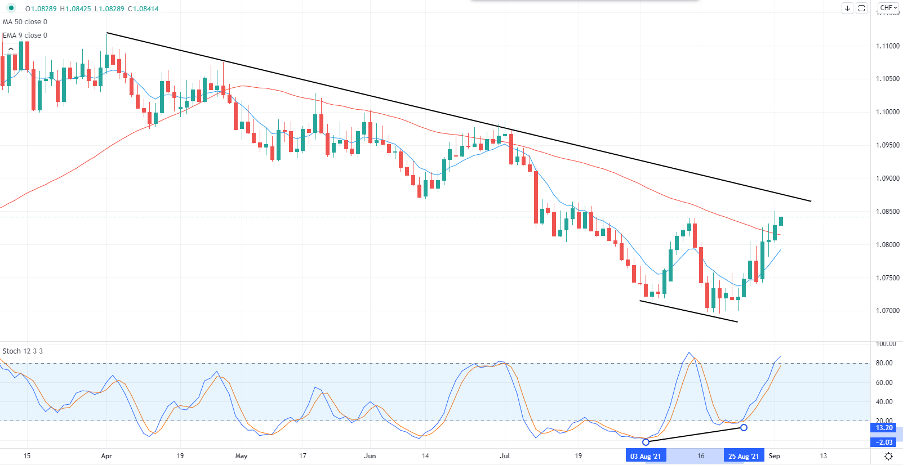- English
- 简体中文
- 繁体中文
- ไทย
- Tiếng Việt
- Español
- Português
- لغة عربية
Although this aggregates automated and discretionary traders and differing timeframes – so it's not one broad view on sustained USD strength. However, on the day we’re seeing a weaker USD and largely poor US data and a more hawkish ECB narrative seem largely behind the USD flow.
On a positive footing, the US ISM manufacturing surprised to the upside at 59.9 vs 58.5 – the regional numbers out of Chicago and Dallas had some feeling this could have been weak, but that wasn’t the case.
The market is fixated on the labour market though, where we saw the ADP private payrolls print coming in at 374k, well below the consensus of 625k – the ADP payrolls has been a tough one to forecast, but what’s important is that it's been a poor read through for the far more market-moving US non-farm payrolls (NFP) report, which is due tomorrow (22:30 AEST). If one is to look at the intra-day chart of USDJPY or even EURUSD, it appears the ADP print did negatively impact the USD, with US 5yr US treasuries also finding buyers, falling from 78bp to 75bp – so regardless of the poor insight ADP has offered to those trying to price risks around NFP, it seems the broader market has pared back USDs into payrolls.
In fact, the most accurate guide for US NFPs has been the Homebase employment data and that suggests we should see the private payrolls element of the NFP coming in around 100k jobs, with the median consensus currently forecast at 610k. Including public sector employment the consensus is for 725k jobs to have been created in August – given the USD flow, one could argue that the market is now positioned for NFPs to come in modestly below expectations – perhaps in the 550k/600k range, but that is just my guesstimate. Economists’ ability to forecast payrolls is low.
While we’ve seen limited moves across asset class, with perhaps the exception of crypto where Ethereum and Chainlink (both are flying) – that said, volatility could ramp up on payrolls. Strong numbers (say >850k) will galvanise the belief of tapering starting in November. Weak numbers (< below 550k), with a higher unemployment rate, may see calls emerging that Fed tapering won’t start until 2022 - the USD won't like that.
Eyeing moves from the ECB
We also need to consider how other central banks are seeing tapering from the Fed. The ECB will be watching moves from the Fed closely as they look at the duration of their own asset purchase program, known as the PEPP.
Next week’s ECB meeting (9 September) suddenly becomes rather interesting and a potential event risk. Two well-known hawks on the ECB governing council – Robert Holzmann and Klaas Knot - have talked about the inflation backdrop requiring a tapering of the ECB’S PEPP sooner. These views have seen a solid rally in the EUR, notably in EURCHF and EURJPY.
EURCHF daily

(Source: Tradingview)
The hawkish views have partially been offset by governing council member Stournaras who suggested the recent inflation jump will be transitory – However, with EU inflation at 3% (a 10-year high) and looking sticky through 2021, there is an active debate in the market about EU inflation over the medium-term.
While no action is expected in next week’s ECB meeting, the question falls on whether the ECB continue to purchase government bonds (as part of their PEPP) program at a current monthly pace of c.EUR80b, or will they taper this to a slower monthly pace?
The main decision faced by the ECB however, is whether to increase the ‘envelope’ of capital it has to buy bonds – with around E500B left in the kitty the PEPP program will expire in March – the EUR will be sensitive to any news that more capital will be tipped into this program, or left to expire. While most rightly focus firmly on future Fed action, the actions of the ECB are well worth being across too.
The current backdrop on inflation does not suggest the program and envelop will be increased, which in theory is a EUR positive. However, the ECB will also be incredibly cognisant of a disorderly move higher in EU bonds, that spills over into a stronger EUR. Subsequently, while ECB hawks are stating their case one suspect Christine Lagarde will, like Jay Powell in the Federal Reserve, remain on the dovish side of the ledger.
The German elections may throw a spanner in the works, but a result may take a while to emerge.
Related articles
Ready to trade?
It's quick and easy to get started. Apply in minutes with our simple application process.
The material provided here has not been prepared in accordance with legal requirements designed to promote the independence of investment research and as such is considered to be a marketing communication. Whilst it is not subject to any prohibition on dealing ahead of the dissemination of investment research we will not seek to take any advantage before providing it to our clients.
Pepperstone doesn’t represent that the material provided here is accurate, current or complete, and therefore shouldn’t be relied upon as such. The information, whether from a third party or not, isn’t to be considered as a recommendation; or an offer to buy or sell; or the solicitation of an offer to buy or sell any security, financial product or instrument; or to participate in any particular trading strategy. It does not take into account readers’ financial situation or investment objectives. We advise any readers of this content to seek their own advice. Without the approval of Pepperstone, reproduction or redistribution of this information isn’t permitted.


